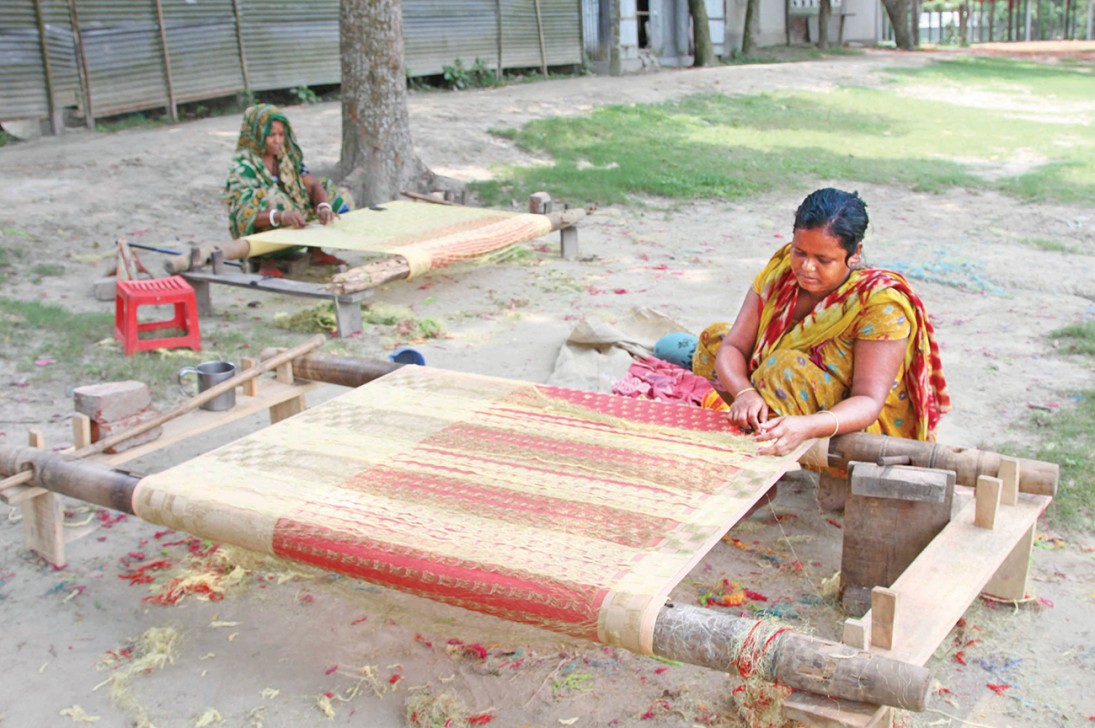Sari weavers face bleak future

Weavers in Tangail are going through a difficult time as the sales of the saris they make using handlooms have dropped drastically in the last couple of years.
The price hike of raw materials, women’s dwindling interest in saris, the rise of power looms, and the availability of Indian products are the major reasons behind the fall of the sales of local sari, according to weavers and traders.
During a recent visit to different parts in the district, weavers were found busy making different types of saris, but they are not sure about the business prospects.
“We are not sure whether we will be able to sell all of our saris although we are selling them at a very low profit,” said Suruj Miah, a handloom owner in Dhulutia village under Sadar upazila.
“Now, we can log a maximum profit of Tk 200 to Tk 300 per sari that takes two to three days to make,” he added.
Dilip Das, a sari trader in the district town, said women are losing interest in wearing saris. Rather, they are interested in salwar kameez, especially those brought in from India.
Around two lakh weavers in the district are involved in the handloom industry, according to weavers and traders. They produce different types of saris, including cotton, jute cotton, jal cotton, banarasi, jamdani, katan, silk, half silk, soft silk, gas silk, dotari silk, jute silk, khaddar, baluchuri, and tosor.
“We used to sell saris worth Tk 1 crore during Eid season five years ago. But the sale has fallen to Tk 20 lakh in recent years,” he said.
Shahin Alam, a weaver at Chandi in Delduar upazila, said many handloom owners have already shut their business because of poor business prospects. Many skilled weavers are also moving to other professions.
Mantu Basak, a sari trader, demanded that the government impose higher duty on the imports of saris to help the local handloom industry stay afloat.
Md Rabiul Islam, liaison officer of the Tangail Basic Centre of Bangladesh Handloom Board, said, “We are ready to extend all-out cooperation to revamp the handloom industry.”
The government has already undertaken a project to provide loans to handloom owners at low interest rate, he added.
